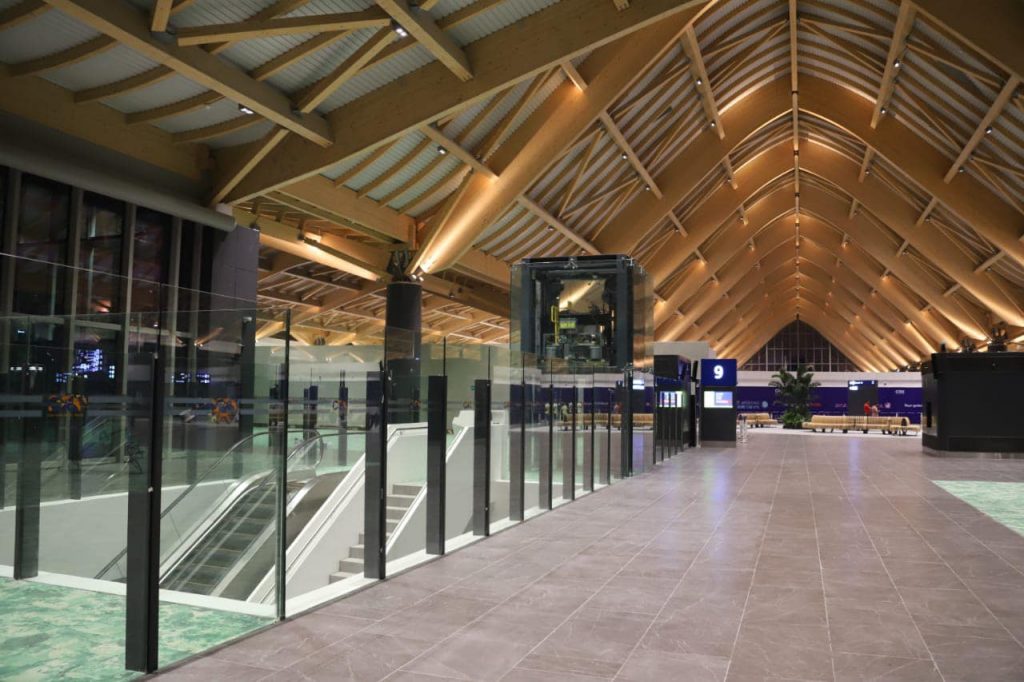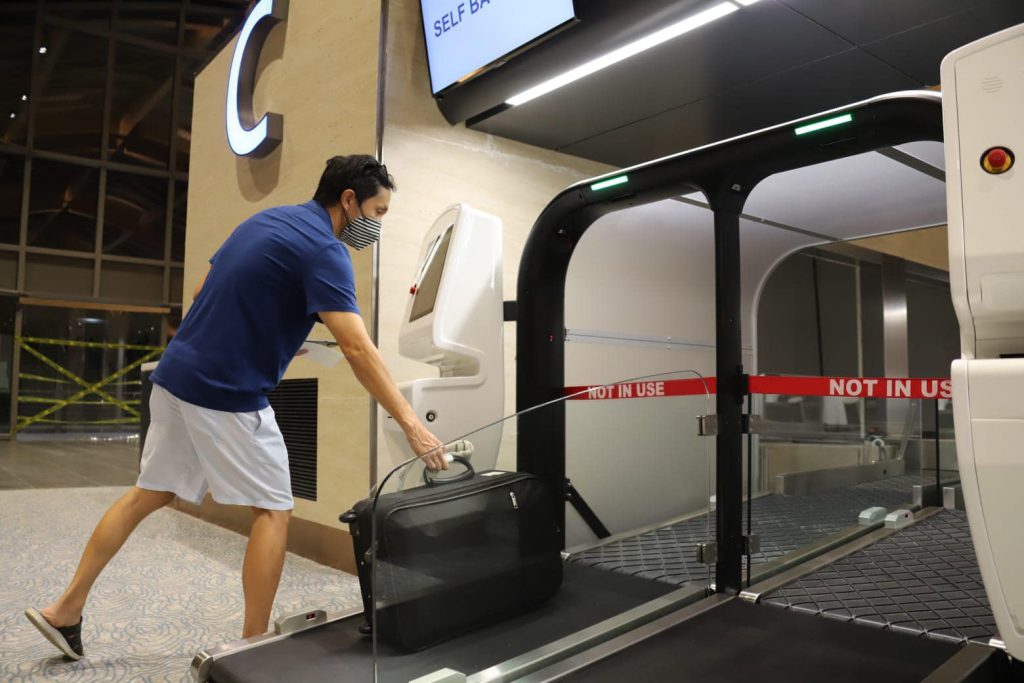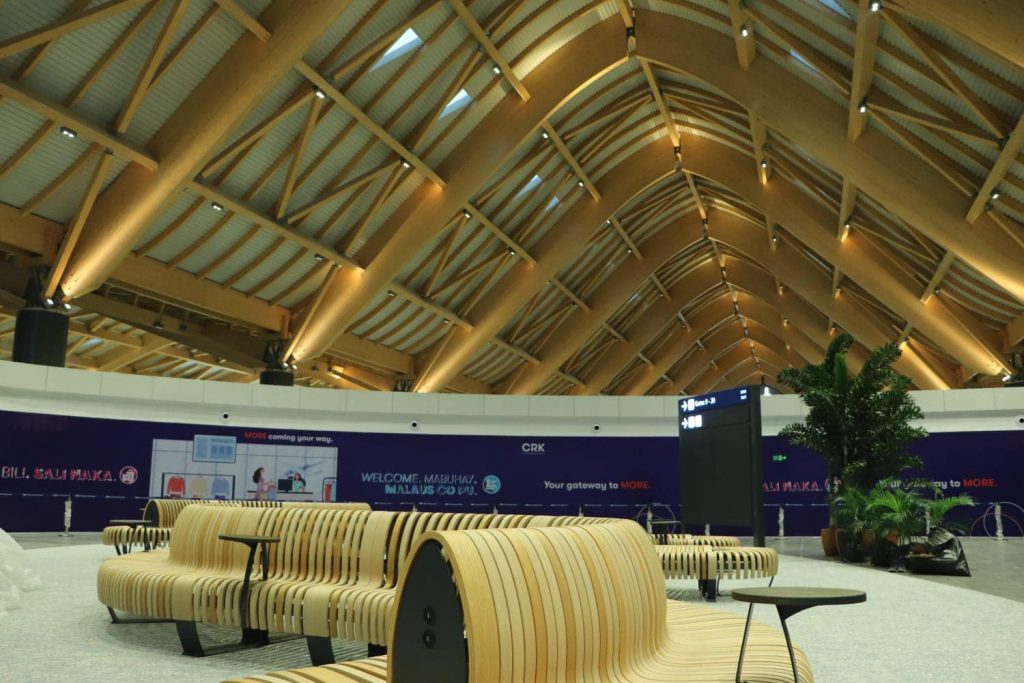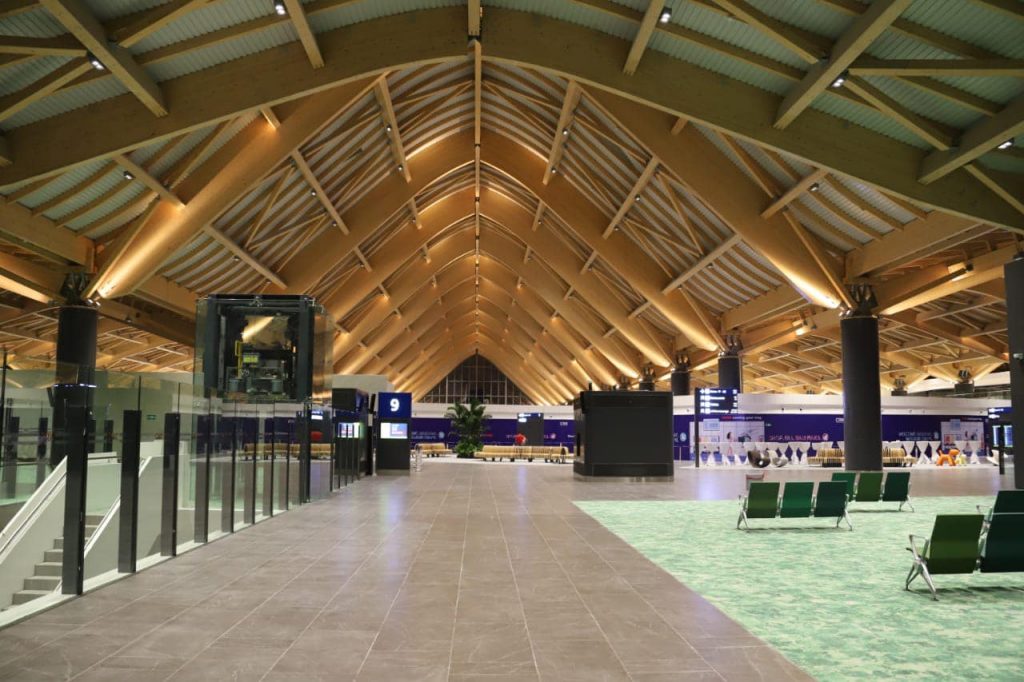By Miguel Camus
It took a while but Clark International Airport in Pampanga province now has a brand-new passenger terminal. No credit-grabbing issues in this case: The project was launched and completed within the Duterte administration.
The terminal will have a capacity of 8 million passengers annually and comes with state-of-the-art features, such as contactless baggage handling, passenger check-ins and checkouts. This will double Clark Airport’s existing capacity since the private sector operator— Luzon International Premiere Airport Development Corp. led by Filinvest Development Corp. and JG Summit Holdings—plans to decommission the old facility.
The terminal itself was built by Megawide Construction Corp. and GMR Infrastructure, the tandem behind the expansion of Cebu’s international airport. Visually, Clark Airport’s new terminal does live up to its name as one of the country’s premier gateways. This was pointed out during a recent inspection by President Duterte, who said it would “improve connectivity, mobility, create jobs and spur economic activity in the regions.”




The project’s implementation was led by the Department of Transportation, Bases Conversion and Development Authority and Clark International Airport Corp.
The path to expanding the Clark Airport was long and spanned administrations. Many might not even recall attempts by the private sector to build a new terminal late during the Arroyo administration. This was the Philco Aero Group of businessman Ricardo Penson that at one point had an agreement with conglomerate San Miguel Corp. to back the Clark Airport project.
Unfortunately for Philco Aero, its proposal for Clark Airport crossed over into the Aquino administration. It was promptly shelved given the government’s distaste for unsolicited projects. Interest in Clark Airport and even Clark Freeport Zone saw a resurgence during the Duterte administration. The new terminal was the first and, so far, the only project to be implemented under the so-called hybrid public-private partnership scheme.
That is another way of saying there were separate auctions for building the facility itself and the 25-year operations and maintenance component. All that is left now is for the facility to actually open and serve those people able and willing to fly during the pandemic. We heard the event with Mr. Duterte on July 17 was initially meant to be an inauguration but was downgraded to an inspection instead. Perhaps there were final kinks to work out and it definitely would not hurt to stretch out and maximize publicity for what is a successful project.
Getting big infrastructure projects to this stage is never an easy task and congratulations to all parties should be in order.
PHOTOS lifted from facebook page of Tourism Secretary Berna Romulo-Puyat









